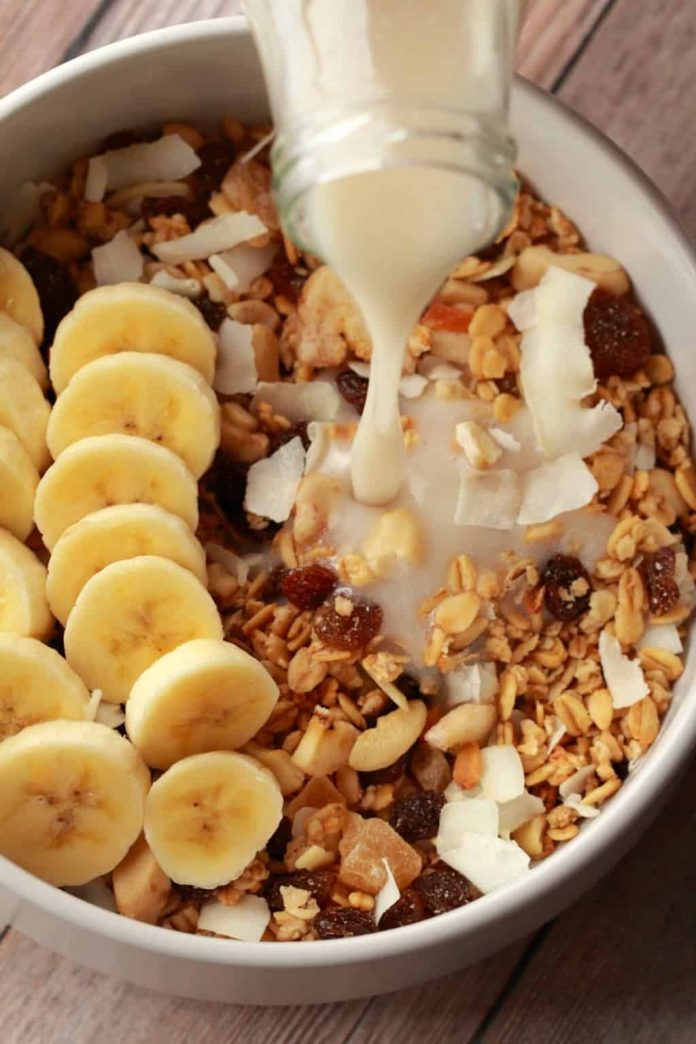Like other non-dairy milks, oat milk is made from blending the rolled oats with water, then straining out the oat solids to get a milk-like beverage. Its overall texture and creaminess can be manipulated with the amount of water, and sometimes, the addition of vegetable-based oils (like sunflower or rapeseed), as well as sugar and flavoring (like vanilla or chocolate).
But unlike other non-dairy milks (rice and almond, especially), oat milk stands up to the heat of the kitchen and chill of the freezer well.
There are a few things you have to keep in mind when swapping it for dairy milk in recipes.
The main thing to consider is fat content and function: Is the liquid the oat milk is replacing higher in fat? If the answer is yes, reach for an extra-creamy variety of oat milk, or supplement the fat content with an added tablespoon of oil or butter. If you are subbing oat milk in for something lower in fat (like, for water in a breakfast smoothie or blended soup), expect a creamier, fuller-bodied result.
Use Oat Milk In Sweet Recipes
When substituting oat milk in sweet recipes, your best bet is to start with higher-in-fat-content, unflavored oat milk. These will typically be labeled “extra-creamy” on the carton, but to be sure, check the nutrition label. Oat milk can be swapped using a 1:1 ratio for traditional milk in custards, mousses, buttercreams, and ganache. The end result, as you might expect, will be lighter than if you had used whole milk, but the structure will be sound.
The challenge comes with baked items: Non-dairy baked goods can sometimes lack that elusive golden-brown finish—something that happens only when there’s a specific amount of fat and sugar present. To help the browning along, scan the recipe you are making for opportunities to increase fat (add a tablespoon of oil or butter per cup of oat milk for a fat content that is similar to whole milk) or simply finish the pastry with a brush of oat milk and sprinkle of turbinado sugar (which will make for a sparkly effect).
How To Use Oat Milk In Savory Recipes
As for savory recipes, fat content matters slightly less so—unless, of course, the desired effect is maximal creaminess. But still, be sure to call in unsweetened, unflavored oat milk.
Swapped in 1:1 for whole milk or water, oat milk will do just fine whisked into a roux for baked pastas, stews, and sauces. I regularly splash it into bubbling braises, reach for it when a curry’s reached fiery levels, and use it to unite a chunky vegetable soup in the blender. And while I haven’t had oat milk curdle on me, I’ve also never attempted to quickly, fiercely boil it for an extended period of time (something traditional milk would hesitate to do, anyways)—so if you try this, let me know how it goes.

















